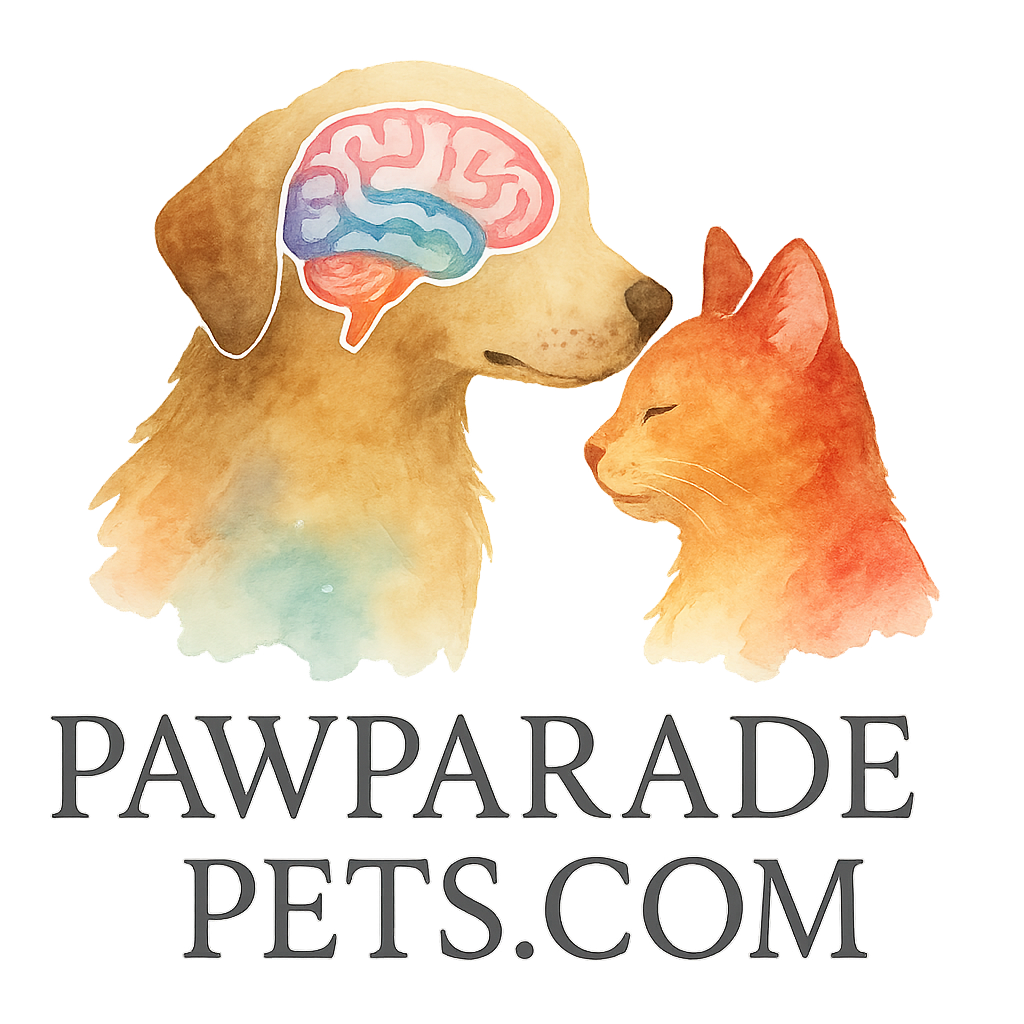Introduction
Have you ever wondered if your furry friend is getting smarter every time you play or train together? Brain training for pets has gone beyond simple tricks—today, smart gadgets are helping pet parents track progress, monitor learning, and even personalize training sessions. In this guide, we’ll explore 11 smart gadgets that can make brain training fun, interactive, and measurable for your pets.
Why Brain Training Matters for Pets
The Link Between Mental Stimulation and Pet Health
Just like humans, pets thrive on mental stimulation. Regular cognitive challenges prevent boredom, reduce anxiety, and even slow down age-related cognitive decline. Brain training is not just a fun activity—it’s a form of preventive healthcare. According to experts, mentally stimulated pets live happier, healthier lives.
How Brain Training Improves Behavior and Obedience
A pet that exercises its brain is less likely to chew on furniture or bark excessively. Structured brain games can reinforce behavior and obedience, making training both rewarding and stress-free.
The Rise of Smart Pet Technology
How Gadgets Help Owners Track Progress
Before technology entered the pet world, progress tracking relied mostly on observation. Now, smart devices log playtime, success rates, reaction times, and even mood patterns—allowing you to measure cognitive improvement over time.
Why Data Tracking Enhances Training Results
Imagine trying to train without knowing whether your pet is actually learning. With gadgets, you get feedback. Data tells you if your pet has mastered commands, needs more practice, or is ready for advanced cognitive challenges.
11 Smart Gadgets to Track Brain Training Progress
1. Interactive Treat Dispensers
Key Features
Interactive treat dispensers encourage pets to solve puzzles or complete tasks before earning a snack. They’re designed to stimulate problem-solving while keeping your furry friend motivated.
Why It Works for Brain Training
This gadget makes pets “work for food,” which strengthens their memory and reasoning skills. It also builds patience—a win-win for both pets and owners.
2. Smart Puzzle Toys
Engaging Problem-Solving Activities
These toys challenge pets with hidden compartments, sliders, and rotating parts. Pets must figure out how to unlock treats, boosting intelligence while offering endless entertainment.
Tracking Pet Intelligence Growth
Many brain training basics puzzle toys now connect to apps that record completion times and difficulty levels.
3. Wearable Smart Collars
Monitoring Cognitive Engagement
Smart collars don’t just track steps; they now measure play intensity and response patterns, giving insights into your pet’s mental activity.
Health and Training Insights
Some models even analyze heart rate and stress levels during training—helping you know when to push forward or give your pet a break.
4. Pet Cameras with AI Features
Remote Training & Engagement
Pet cameras allow owners to watch, talk, and reward pets remotely. Many AI-enabled cameras track reaction time to commands, helping you train even while away.
Tracking Real-Time Reactions
The AI feature identifies when your pet follows instructions, logs successes, and provides a progress report.
5. Automatic Fetch Machines
Combining Physical and Mental Stimulation
Fetch machines are not just for exercise—they test your pet’s ability to retrieve, return, and reload balls.
Tracking Play Sessions
Many smart fetch devices connect to apps, logging how many throws your pet completes daily.
6. Brain Training Apps with Smart Integrations
Personalized Learning Programs
Apps provide training modules based on your pet’s breed, age, and current skill level.
Data-Driven Training Progress
Paired with smart gadgets, apps track everything from games and activities to memory-based exercises.

7. Motion-Activated Toys
Encouraging Independent Play
Perfect for when you’re busy, motion-activated toys move unpredictably, challenging your pet’s reflexes and problem-solving skills.
Building Consistent Training Routines
Since they activate automatically, they reinforce daily brain stimulation without requiring owner input.
8. Smart Feeding Bowls
Mental Stimulation During Mealtime
Why should eating be boring? Smart bowls introduce puzzles that pets must solve to access food.
Portion Control and Training
These bowls also track eating habits, which helps with discipline and weight management.
9. Voice Command Devices
Reinforcing Obedience
Devices that recognize voice commands help pets associate words with actions.
Tracking Command Responses
Some models log response accuracy and time, making it easier to measure obedience progress.
10. Pet-Friendly Tablets & Screens
Interactive Games for Pets
Specialized screens let pets “play” touch-based games, like chasing moving shapes.
Measuring Engagement Levels
Engagement is recorded, helping you gauge which types of activities keep your pet sharp.
11. AI-Powered Training Robots
Advanced Interactive Challenges
These robots interact dynamically with pets, offering brain stimulation through voice, movement, and touch.
Long-Term Training Progress
Robots learn alongside your pet, adapting difficulty levels for maximum growth.
Choosing the Right Gadget for Your Pet
Matching Gadgets with Personality Types
Not every gadget suits every pet. High-energy pets may thrive with fetch machines, while problem-solvers excel with puzzle toys.
Budget vs. Value Considerations
Smart gadgets range from affordable toys to high-tech robots. Always balance features with long-term value.
Integrating Smart Gadgets with Traditional Training
Balancing Human Interaction and Technology
While gadgets are great, pets still crave human connection. Combine tech-based play with personal bonding for the best results.
The Role of Consistency in Pet Training
Training progress depends less on gadgets and more on consistency. Daily routines keep pets engaged and learning.
Common Mistakes to Avoid in Brain Training
Over-Reliance on Technology
Don’t let gadgets replace personal attention. Use them as tools, not substitutes.
Skipping Regular Play and Engagement
Even the smartest devices can’t replace a good game of fetch or cuddle time.
Benefits of Tracking Brain Training Progress
Enhancing Cognitive Health
Tracking ensures your pet’s brain stays active, reducing risks of memory decline.
Improving Obedience and Discipline
Progress logs highlight areas where reinforcement is needed.
Strengthening the Bond Between Pet and Owner
Engaging in fun activities strengthens your relationship while boosting your pet’s intelligence.
Conclusion
Brain training isn’t just about fun tricks—it’s about giving pets the mental stimulation they need to thrive. With the help of smart gadgets, you can now track, measure, and enhance your pet’s cognitive development like never before. Whether it’s a puzzle toy, a wearable collar, or an AI robot, the right gadget can make all the difference in your training journey.
For more on pet brain training, check out Paw Parade Pets and explore topics like brain training basics, tools & toys, and advanced training challenges.
FAQs
Q1: What is the best smart gadget for brain training beginners?
Interactive treat dispensers are the best starting point since they’re easy and motivating.
Q2: Can smart collars really track brain activity?
Yes! They measure play intensity, reactions, and sometimes even stress levels.
Q3: Are AI-powered robots safe for pets?
Absolutely—these devices are designed with pet-friendly materials and safe interactions.
Q4: Do smart feeding bowls help with weight control?
Yes, they manage portions while providing puzzle challenges for brain stimulation.
Q5: How often should I use smart gadgets with my pet?
Daily use is best, but balance with human interaction and traditional training.
Q6: Can older pets benefit from brain training gadgets?
Definitely! Brain games can slow cognitive decline and keep senior pets sharp.
Q7: Where can I find more ideas for brain training activities?
Check out games and activities on Paw Parade Pets for inspiration.


